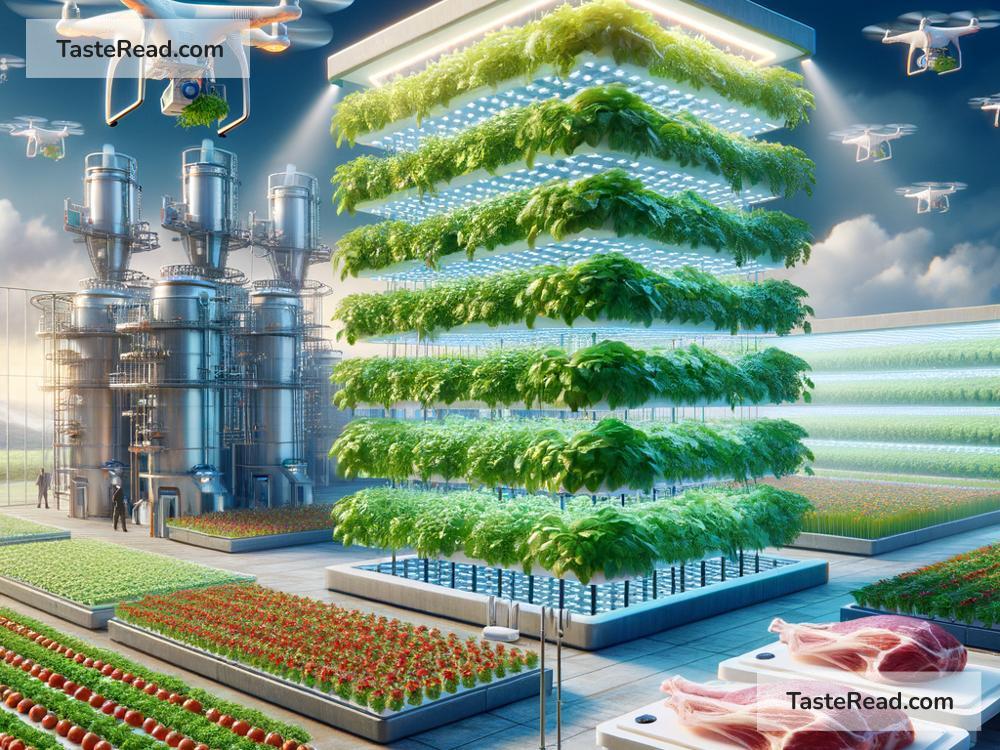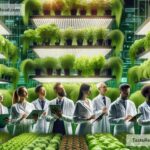The Future of Food and Global Food Systems
The way we grow, share, and eat food is changing. Every day, scientists, farmers, and communities work to rethink how the planet can feed people—while also protecting natural resources like water, soil, and air. With a growing global population, climate change, and technological advances, the future of food is becoming one of the most important conversations in the world.
Challenges Facing Global Food Systems
One major challenge is population growth. The world is expected to have nearly 10 billion people by 2050. Feeding everyone will be a big task, especially when natural resources are limited. Growing food takes land, water, and energy, but many countries are already struggling with shortages.
Another challenge is climate change. Rising temperatures, unpredictable weather, and natural disasters make farming harder. Crops fail during droughts, floods, or storms, which can lead to food shortages. Farmers might need to stop growing traditional crops and switch to plants that can survive in harsher conditions.
On top of this, global food systems are facing inequality. Some countries produce huge amounts of food, while others struggle with famine and food shortages. Many people live without access to affordable, healthy food, while others waste food unnecessarily. This imbalance needs to be addressed for a fairer future.
Innovations in Food Production
Thankfully, there is hope for the future of food. Scientists and innovators are coming up with creative ways to tackle these challenges. One promising solution is vertical farming. Instead of using land, food is grown indoors in stacked layers. These farms use less water and don’t rely on good weather to grow crops. Vertical farms can be built in small spaces, even in busy cities, bringing fresh food closer to people.
Another exciting innovation is lab-grown meat. Scientists are developing ways to produce meat without raising animals. This process involves growing animal cells in a lab to create meat that tastes just like traditional beef, chicken, or pork. Lab-grown meat could reduce the environmental impact of farming, including greenhouse gas emissions and land use.
Plant-based meat substitutes are also becoming more popular. Companies are using plants like peas, soy, and mushrooms to create foods that mimic the texture and flavor of meat. These alternatives are healthier for people and better for the planet.
Technology’s Role in Farming
Technology is revolutionizing farming. Drones and satellites help farmers monitor their crops and livestock from above, identifying problems like pests or disease faster. Artificial intelligence (AI) is being used to analyze data and predict better planting schedules or determine the best type of seeds for different climates.
Robotic farm equipment is also becoming common. Self-driving tractors and robotic harvesters reduce the need for manual labor, making farming easier and more efficient. These tools allow farmers to focus on optimizing production.
Even smartphones are playing a role in modern agriculture. Apps and online platforms let farmers connect with markets more easily, sharing tips, selling crops, or finding the best prices. This makes farming more profitable and accessible, even for small-scale farmers.
Protecting the Environment and Reducing Waste
The future of food also needs to focus on protecting the planet. Sustainable farming methods are designed to grow food while caring for soil, water, and biodiversity. For example, crop rotation—planting different crops each year—helps keep soil healthy and reduces pests.
Some farmers are reducing chemical use by adopting natural methods, such as using insects to control pests or planting cover crops to keep weeds away. Others are experimenting with agroforestry, which combines crops and trees to improve soil health and protect the environment.
Food waste is another problem that we can solve. About one-third of all food produced globally is wasted. This happens at every stage: during farming, transport, storage, and at homes and restaurants. Cutting food waste could feed millions of people and reduce the environmental damage caused by food production.
A New Way of Eating
The future of food isn’t just about growing and transporting food. It’s also about how we eat. People may start eating more locally grown food to support regional farmers and reduce transportation emissions. Community gardens and urban farming projects are already helping cities provide fresh produce to local residents.
There might also be a shift toward eating more plant-based diets. Fruits, vegetables, beans, and grains require fewer resources to grow compared to meat and dairy. By eating differently, people can reduce the strain on global food systems and improve their health.
Insects are another surprising food of the future. Packed with protein and nutrients, insects are already eaten in parts of the world. They require very little water, feed, and space to grow. While some people may hesitate to try insect-based meals, these foods could eventually become mainstream.
Working Together for the Future
The future of food depends on cooperation. Governments, businesses, farmers, scientists, and individuals must work together to create a better global food system. Investing in technology, promoting sustainable farming, reducing waste, and making food accessible to everyone are key steps.
As consumers, we also play a role. Supporting local farmers, reducing food waste, and exploring plant-based or alternative proteins are ways we can contribute to change.
The future of food is full of opportunities. By combining innovative ideas with a commitment to sustainability, we can create a world where everyone has enough to eat—while protecting the planet for generations to come.


